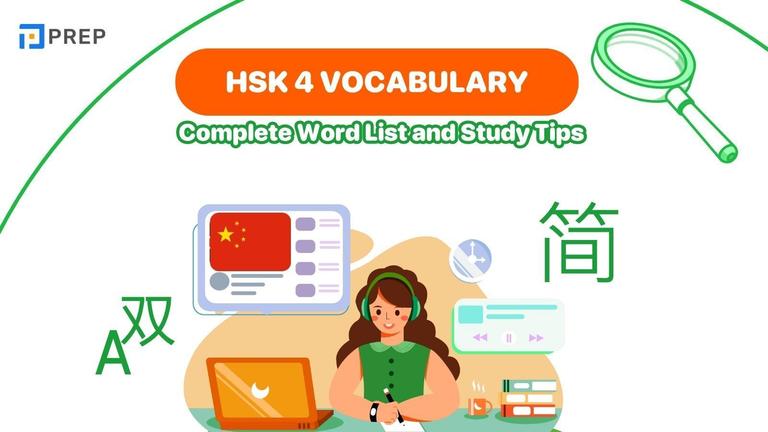Master Mandarin Sounds with the Pinyin Chart Table
The Chinese Pinyin table is an essential tool for mastering Mandarin pronunciation. Whether you're a complete beginner or preparing for HSK, understanding how initials, finals, and tones work together helps you speak more clearly and confidently. This guide will walk you through it.
I. What Is the Chinese Pinyin Table?
The Chinese Pinyin table is a foundational tool used to represent the pronunciation of Mandarin Chinese using the Roman alphabet. It organizes all possible syllable combinations by pairing initials (consonant sounds) with finals (vowel or compound sounds), helping learners recognize how Mandarin syllables are built.
Pinyin, short for Hanyu Pinyin, is not a replacement for Chinese characters, but a phonetic guide that shows learners how to pronounce each word correctly. Since Chinese is a syllable-based language, each square in the table represents a possible sound or syllable used in spoken Mandarin.
A typical Pinyin table is structured with:
- Rows listing initials (声母): such as b, p, m, f, d, t, n, l, and more.
- Columns listing finals (韵母): such as -a, -ai, -ong, -uai, etc.
- Tone markers: not shown directly in the basic table, but each syllable may be pronounced with one of four tones (+ a neutral tone), which affects its meaning.
Understanding how to read and navigate the Pinyin table is crucial for:
- Learning accurate pronunciation
- Developing listening and speaking fluency
- Mastering vocabulary and tones
- Passing standardized tests like HSK
In short, the Chinese Pinyin Table is your starting point for mastering Mandarin pronunciation—think of it as the periodic table of Chinese sounds.
II. Full Chinese Pinyin Table
The full Chinese Pinyin table lays out all the valid syllable combinations in Mandarin by systematically pairing initial consonants (initials) with vowel sounds (finals). It serves as a foundational resource for pronunciation practice, tone application, and vocabulary building.
|
b |
p |
m |
f |
d |
t |
n |
l |
g |
k |
h |
j |
q |
x |
z |
c |
s |
zh |
ch |
sh |
r |
||
|
i |
zi |
ci |
si |
zhi |
chi |
shi |
ri |
|||||||||||||||
|
a |
a |
ba |
pa |
ma |
fa |
da |
ta |
na |
la |
ga |
ka |
ha |
za |
ca |
sa |
zha |
cha |
sha |
||||
|
ai |
ai |
bai |
pai |
mai |
dai |
tai |
nai |
lai |
gai |
kai |
hai |
zai |
cai |
sai |
zhai |
chai |
shai |
|||||
|
an |
an |
ban |
pan |
man |
fan |
dan |
tan |
nan |
lan |
gan |
kan |
han |
zan |
can |
san |
zhan |
chan |
shan |
ran |
|||
|
ang |
ang |
bang |
pang |
mang |
fang |
dang |
tang |
nang |
lang |
gang |
kang |
hang |
zang |
cang |
sang |
zhang |
chang |
shang |
rang |
|||
|
ao |
ao |
bao |
pao |
mao |
dao |
tao |
nao |
lao |
gao |
kao |
hao |
zao |
cao |
sao |
zhao |
chao |
shao |
rao |
||||
|
e |
e |
me |
de |
te |
ne |
le |
ge |
ke |
he |
ze |
ce |
se |
zhe |
che |
she |
re |
||||||
|
ei |
ei |
bei |
pei |
mei |
fei |
dei |
nei |
lei |
gei |
hei |
zei |
zhei |
shei |
|||||||||
|
en |
en |
ben |
pen |
men |
fen |
nen |
gen |
ken |
hen |
zen |
cen |
sen |
zhen |
chen |
shen |
ren |
||||||
|
eng |
eng |
beng |
peng |
meng |
feng |
deng |
teng |
neng |
leng |
geng |
keng |
heng |
zeng |
ceng |
seng |
zheng |
cheng |
sheng |
reng |
|||
|
er |
er |
|||||||||||||||||||||
|
i |
yi |
bi |
pi |
mi |
di |
ti |
ni |
li |
ji |
qi |
xi |
|||||||||||
|
ia |
ya |
dia |
lia |
jia |
qia |
xia |
||||||||||||||||
|
ian |
yan |
bian |
pian |
mian |
dian |
tian |
nian |
lian |
jian |
qian |
xian |
|||||||||||
|
iang |
yang |
niang |
liang |
jiang |
qiang |
xiang |
||||||||||||||||
|
iao |
yao |
biao |
piao |
miao |
diao |
tiao |
niao |
liao |
jiao |
qiao |
xiao |
|||||||||||
|
ie |
ye |
bie |
pie |
mie |
die |
tie |
nie |
lie |
jie |
qie |
xie |
|||||||||||
|
in |
yin |
bin |
pin |
min |
nin |
lin |
jin |
qin |
xin |
|||||||||||||
|
ing |
ying |
bing |
ping |
ming |
ding |
ting |
ning |
ling |
jing |
qing |
|
|||||||||||
|
iong |
yong |
jiong |
qiong |
xiong |
||||||||||||||||||
|
iou |
you |
miu |
diu |
niu |
liu |
jiu |
qiu |
xiu |
||||||||||||||
|
o |
o |
bo |
po |
mo |
fo |
|||||||||||||||||
|
ong |
dong |
tong |
nong |
long |
gong |
kong |
hong |
zong |
cong |
song |
zhong |
chong |
rong |
|||||||||
|
ou |
ou |
pou |
mou |
fou |
dou |
tou |
lou |
gou |
kou |
hou |
zou |
cou |
sou |
zhou |
chou |
shou |
rou |
|||||
|
u |
wu |
bu |
pu |
mu |
fu |
du |
tu |
nu |
lu |
gu |
ku |
hu |
zu |
cu |
su |
zhu |
chu |
shu |
ru |
|||
|
ua |
wa |
gua |
kua |
hua |
zhua |
shua |
||||||||||||||||
|
uai |
wai |
guai |
kuai |
huai |
zhuai |
chuai |
shuai |
|||||||||||||||
|
uan |
wan |
duan |
tuan |
nuan |
luan |
guan |
kuan |
huan |
zuan |
cuan |
suan |
zhuan |
chuan |
shuan |
ruan |
|||||||
|
uang |
wang |
guang |
kuang |
huang |
zhuang |
chuang |
shuang |
|||||||||||||||
|
uei |
wei |
dui |
tui |
gui |
kui |
hui |
zui |
cui |
sui |
zhui |
chui |
shui |
rui |
|||||||||
|
uen |
wen |
dun |
tun |
lun |
gun |
kun |
hun |
zun |
cun |
sun |
zhun |
chun |
shun |
run |
||||||||
|
ueng |
weng |
|||||||||||||||||||||
|
uo |
wo |
duo |
tuo |
nuo |
luo |
guo |
kuo |
huo |
zuo |
cuo |
suo |
zhuo |
chuo |
shuo |
ruo |
|||||||
|
ü |
yu |
nü |
lü |
ju |
qu |
xu |
||||||||||||||||
|
üan |
yuan |
juan |
quan |
xuan |
||||||||||||||||||
|
üe |
yue |
nüe |
lüe |
jue |
que |
xue |
||||||||||||||||
|
ün |
yun |
jun |
qun |
xun |
Download: Chinese Pinyin Char
How to Use the Full Table
- Syllable pronunciation: Practice reading each combination aloud, one row at a time.
- Visual learning: Use color-coded charts to distinguish initials, finals, and tone positions if available.
- Tone layering: Choose a syllable (e.g. "ma") and practice it with four tones: mā, má, mǎ, mà.
- Flashcard method: Build words by practicing common syllables from the table and adding real vocabulary.
Having a printable or interactive Pinyin table nearby can serve as a constant reference point as you learn new words, review grammar, or improve pronunciation accuracy.
III. Tips for Learning and Practicing Pinyin
Mastering Pinyin is essential for building a strong foundation in Mandarin Chinese. Whether you're just starting out or looking to improve your pronunciation, Pinyin helps you read, speak, and hear Chinese with greater accuracy. Here are some practical tips to make your Pinyin practice more effective.
Start with Initials and Finals Separately
- Focus on learning the initials (b, p, m…) and finals (-a, -ai, -ang…) in small, manageable groups.
- Practice each with clear articulation, paying attention to tongue placement and airflow.
- Use mirror or video to observe your mouth shape.
Practice with Audio or Native Models
- Use tools like Pleco, Du Chinese, or Speechling to listen and repeat after native speakers.
- Start slowly, mimicking sound and tone, then increase speed gradually.
- Record yourself and compare your pronunciation with model audio.
Include Tone Exercises from the Beginning
- Don’t practice Pinyin "flat"—always include tone practice.
- Focus especially on tone contrast, like mā (妈, high) vs mǎ (马, falling-rising).
- Use hand gestures or pitch graphs to visualize tone shapes.
Use a Pinyin Table for Guided Practice
- Follow the Pinyin Table row by row to learn how initials combine with finals.
- Practice aloud, going across each combination in a deliberate rhythm.
- Highlight tricky combinations and revisit them often.
Associate Pinyin with Vocabulary
- Learn new words by breaking them into their Pinyin syllables + tone, not just characters.
Example: 你好 = nǐ (3rd tone) + hǎo (3rd tone) - Flashcards with Pinyin-style drills are helpful to reinforce both form and sound.
Be Patient and Consistent
- Don’t rush to memorize the entire Pinyin system overnight.
- Practice a little each day—consistency builds fluency.
- Accept mistakes as part of the process and revisit difficult sounds regularly.
With the right approach, Pinyin becomes more than just a pronunciation tool—it becomes your shortcut to clearer speaking, better listening, and faster progress in learning Chinese.
Mastering the Chinese Pinyin table may feel like a basic first step—but it’s a vital one. From individual syllables like bā and mǎ to full words like 你好, Pinyin brings structure, sound, and clarity to your Mandarin learning journey. It’s the key that unlocks accurate pronunciation, tone recognition, and natural speech rhythm.
Keep building your Mandarin foundation with PREP’s structured pronunciation guides, downloadable Pinyin charts, and real-world speaking practice—designed to help you read, speak, and understand Chinese one syllable, one tone, and one confident conversation at a time.

Hi I'm Chloe, and I am currently serving as an Product Content Administrator at Prep Education. With over five years of experience in independent online IELTS study and exam preparation, I am confident in my ability to support learners in achieving their highest possible scores.
Comment
Premium content
View allPersonalized roadmap
Most read












